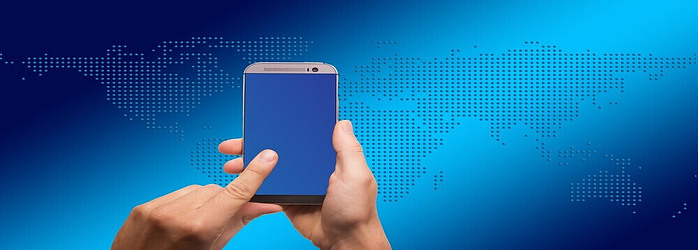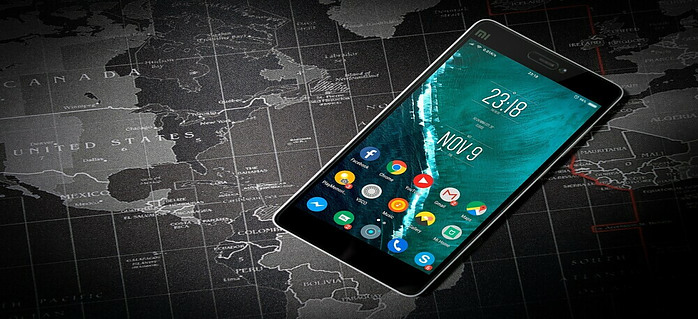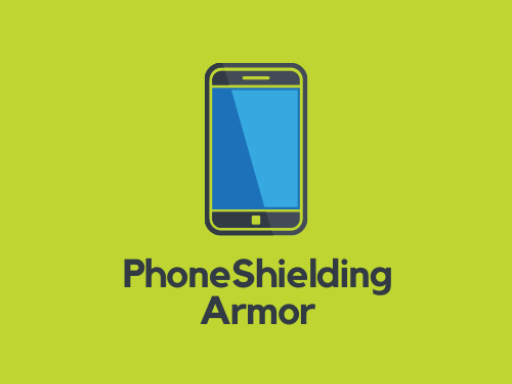Phone Numbers Have Evolved
Over time, the ways have changed on how we dial phone numbers. Now, all it takes is to simply press a set of buttons and wait for a call to go through.
You want to be sure that you’re dialing a number with the appropriate amount of digits required. You also want to make sure that the number you dial is in service of course.
It’s never a good idea to abuse the purpose of number dialing or abuse phone privileges in general. There can be repercussions that can come with it.
Take prank calls for instance. It’s not recommended to make those kinds of calls. No one wants those kinds of calls to potentially be traced. It’s also unwise to make false emergency calls. No arrests need to be made.
What Does The +1 Mean?
The +1 is a code used in much of North America. Countries like the US and Canada use it frequently. It can also be used in other areas in the vicinity including Caribbean areas and Pacific coast areas.
The number codes are mostly referred to as country codes. There are several other names for it. There are up to 9 of these codes in the world because there are 9 world zones.
These codes are categorized based on world zone. The order goes from +1, +2, +3, +4, +5, +6, +7, +8, to +9. Since North America is categorized as world Zone 1, the corresponding country code is +1.
This is supposed to apply mainly to mobile phones. However, landline phones may also require you to press 1 first before regularly dialing a phone number. Although it’s not exactly a “+1”, the same rule of pressing 1 before dialing still seems to apply.
For smartphones and iPhones, the +1 can be seen. This could even happen with any flip phone users. A phone user can check his or her contacts and choose any name at random.
They will notice that all the numbers will have a +1 in front. Though it may seem like it’s something of a default, many cell phones are already preprogrammed that way.
The +1 is used on an international scale and has since become something of a normality. It didn’t exist at first but it did develop over time. This was attributed by one of the most famous and popular phone companies in the world.
When Did It All Start?
Although it did not become ingrained straight away. Interestingly, the concept came about in the 1940s in North America. It would also go into effect around that same time.
The effects of it didn’t really become felt for everyone at the same time. It had to start somewhere first with that “somewhere” being North America and then eventually going from nationwide to worldwide.
It’s growth increased on an unprecedented scale from the 1990s to the 2000s. This would also trigger other numerous ways of electronic communication aside from cell phones.
The phone company responsible for developing this concept is AT&T. The concept is a part of what is called a telephone numbering plan.
For most of North America, the corresponding plan is the North American Numbering Plan (NANP). North American countries like Mexico is not part of said plan.
Why Does It Happen?
The aforementioned reason behind it all stems from the numbering plan that AT&T developed. Every smartphone and iPhone in North America is affected by it and is categorized into a calling code.
So if you receive a call from one area far enough outside your local area, it will likely have a +1 in the front. In the US, it can vary from state to state. This can also apply for Canada’s provinces as well as areas areas of the Caribbean.
However, the +1 can possibly still be seen even when receiving an incoming call from a local number.
That may seem confusing but it’s nothing to really be alarmed by. The numbers are just getting rerouted.
What If You Don’t Need The Plus 1?
Ultimately, dialing +1 is commonly required. There have been many instances when an automated voice has said to dial a 1 first. It’s usually required when making a call to an area outside your region.
For more peculiar reasons, it might still be required even if a call is to be made within your region. Because phone numbers work differently depending on the area, the requirements can vary.
Did you find this helpful? Would you like to share your thoughts? Any and all are welcome. Additional updates are eventually made as new information becomes available. Thank you for reading!

14 replies on “What’s Purpose Of Certain Phone Numbers Starting With Plus 1?”
Before visiting your website I never really gave much thought to phone numbers starting with the plus 1.
Interestingly, the plus 1 is mostly country codes. We rarely think about what the plus 1 means in a phone number we just accept it.
The history of this is very interesting as well. I am happy that I decided to visit this website to read this article.
Jeff
What makes me happy is knowing that others find some kind of value in what I present. I myself also didn’t think about how in depth it goes. Well, at least not before. Seemingly, the overall intention of number systems has been to create some kind of organized structure. There have been a fair share of successes. As complicated as it can be, there’s always reasoning behind it all. It can be a lot to take in. What counts is that the more it can be understood, the better.
Thanks for breaking down the evolution of dialing phone numbers! It’s interesting to learn about the origins of the +1 code, especially its roots with AT&T in the 1940s. The explanation about its usage in North America and the NANP adds clarity to why we often see it before phone numbers.
Understanding that the +1 is a calling code and its role in rerouting calls helps demystify the occasional appearance of +1 even for local numbers. Your insights about the necessity of dialing +1 for calls outside the region and the potential variations in requirements add a practical touch.
Overall, it’s a helpful read for those curious about the nuances of phone number dialing. Thanks for sharing this information
I’m glad it gives you more insight. Although it can greatly vary from place to place, it’s common to become used to something without fully knowing the entire reasoning behind it. There’s always new things.
This was quite an interesting read. Never once had I thought about the meaning or history behind country codes. I am from the Caribbean, so we too use +1 for our country. You mention “world zones” and this is quite new to me. Thank you for the insight. What about the countries that use “011” etc.? Why do these differ from the +1 etc?
Dee_J
011? That’s a very good question because it’s not something often talked about. I’ve also found it peculiar at first. As I learned about it more and understood it, it started to make more sense.
Although it’s been said that +1 and 011 are the same thing, that’s not really true. There is a specific difference between +1 and 011
Because +1 is a country code, anyone living in North America and other respective areas can make calls within that range using that specific code.
With 011, it’s an exit or international code. It’s not surprising that many people don’t know that because most people don’t make those kinds of calls.
This does apply to parts of North America and a select number of respective Caribbean nations who may need to use the code to make calls internationally.
Your exploration of phone numbers starting with plus 1 is intriguing. I appreciate your breakdown of their purposes, particularly for toll-free and long-distance calls. However, I’m curious about the significance of the plus sign itself in international dialing codes. How does it affect the way phone numbers are dialed and routed globally?
In my experience, understanding these nuances can be quite helpful, especially when communicating with friends or colleagues from different countries. Have you encountered any interesting cultural differences or challenges when dialing international numbers? Sharing insights on this aspect could further enrich your post and help readers navigate phone communication more effectively. Overall, your explanation sheds light on an often overlooked aspect of phone numbering systems.
The + in phone numbers is used to signify the country code. Without it, a call can never really be properly placed. This especially applies nowadays. It’s often seen in cell phone numbers. It’s slightly different with landline phone calls as the + does not appear on any number on caller ID. That part is a bit more complicated.
I only have one very vague memory of when an international call was made. Only I didn’t make that call, another family member did. What makes it more even more vague is the fact that I was only a kid at the time. I was either 5 or 6.
Unfortunately, because it’s almost never done in my family, sharing an experience on that would not be helpful enough in this case.
I’m not sure when or even if I’ll be making an international call myself. If at some point I can make a friend or two overseas and talk with them frequently enough, making international calls can become something I can practice doing. I’m glad you’ve found value in what you’ve read.
Hi Tyre,
It’s interesting to see how these codes, deeply rooted in the history of telecommunications, play a crucial role in our daily contacts. However, you’ve got me wondering, with the world becoming more connected and people increasingly relying on internet-based communication platforms, how do you see the future of these country codes evolving? Will they remain just as relevant, or do you foresee a shift towards a more unified global system of dialing? Just curious to see if we’ll be telling our grandkids about the good old days of +1’s and area codes.
Thank you for your work and sharing.
Warm regards,
Makhsud
There are so many layers. There’s no telling if there is a maximum depth to it. It will get even more sophisticated as it continues.
These are good questions. As far as how country codes may evolve, your guess is as good as mine. There could be more digits in phones than there are right now.
As far as relevance, I’m confident we’ll still be using the same numbers for as long as we’re alive at least. If any significant changes happen, we might not be around anymore. Or maybe we might see something.
These are our opinions. But the ones who know best are the ones that are active within the telecommunication walls. For the most part, we’ll never really know, whether later or never, until it happens.
Hey Tyre,
Such an interesting piece. It had never occurred to me to consider how the +1 numbers existed. The fact that +1 numbers were also used in the Caribbean region had never crossed my mind. Your article delves into phone numbers’ origins and practical implications that start with +1. It explains that the +1 prefix is a country code used in North America, which includes the US, Canada, and parts of the Caribbean. The article provides detailed info on the development of this dialing system since the 1940s, highlighting its beginnings with AT&T and the North American Numbering Plan. It also addresses the practical aspects of using +1 in different calling scenarios, such as local and international calls.
Knowing that there’s a lot that goes into it makes the history behind it that much more vast. Although not everything can be fully understood, the insight is there.
It can get complicated depending on the circumstances. We’re used to what we’ve been doing for years. It’s when a different area enters the mix that learning something different may take some adjustment.
There’s always something new we haven’t found out about yet. Many discoveries and new experiences just keeps things interesting.
I have always wondered why some countries have the +1 in front of them and others +2 or higher. And also why you don’t need to dial those numbers if you are phoning somebody in your own country.
I didn’t know that a zone 1 country gets a +1 number and it went up from there. Strangely I think South Africa starts with a 2. I would have thought it would be closer to 4 or 5 when it comes to zoning. I wonder how they work the zones out.
We do get the general breakdowns nowadays. That still leaves openings for areas that may be in conjunction with one another to have an alteration or two.
There may be an exception for thing or multiple things. That’s always a consistent occurrence. Sometimes it’s surprising as to where they are.